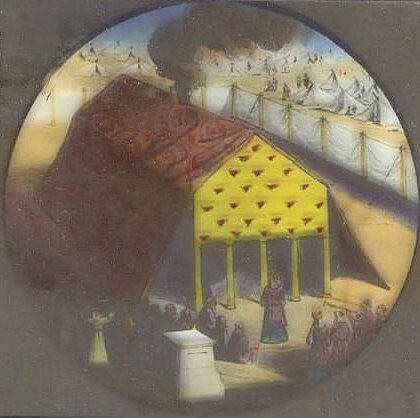The Tabernacle, Tent, or Portable Temple, was constructed so that it could be readily taken down, moved from place to place, and erected at will. It was especially adapted to the needs of a nomadic people. Being constructed on geometrical and scientific principles, it readily lent itself to a practical system of removal and erection which was essential in the case of so large and costly a structure. The Tabernacle consisted of an oblong or rectangle, called the Court, in the rear half of which was the tent or covering of the Sanctuary. Under this Tent, the Holy and Most Holy Places were defined by partitions of boards and pillars, securely joined by means of rods, rings, etc. A careful study of the entire structure reveals an architectural gem, serviceably conceived, beautifully designed, mystically embellished, celestially canopied, and inspiring the beholder with profound reverence and peaceful security in the thought of an ever present and Indwelling God, and typifying the encampment of the Angels of the Lord around about them that fear Him. A study of the ceremonies, the sacrificial offerings, and the priestly ministrations of the Tabernacle will reveal the great spiritual mystery of the Indwelling God, as made manifest by Moses during the sojourn in the wilderness.
~~ooOoo~~
This page is adapted from the Glossary at Phoenixmasonry — Used with permission.











